Ennio Morricone – Svolta Definitiva (Città Violenta)
RCA SS 1985 Japan Released 1970
Track A – Città Violenta
Track B – Svolta Definitiva
Legendary master composer Ennio Morricone, is behind the soundtrack for the 1970 film Città Violenta, and this Japanese single release gifts us with two outstanding tracks from Sergio Sollim’s film. Italian soundtrack collectors…you need this!
Morricone was the unquestionable leader for scoring Italian cinema, and although he achieved wide recognition with Sergio Leone’s series of Westerns, we all are aware of his diverse range of colour, style, methods and moods. He was always exciting and knew how to create atmosphere, even if it was a totally new angle, and opposing the predictable. I get this feeling, when Ennio was composing scores for these kind of action thrillers of the 60’s and 70’s, it’s like he’s at the wheel of a Ferrari Dino 246, steering us in and out of dangerous and intense situations, speeding up, slowing down, then flooring it even more. And when things are calm, you’re still anticipating the unexpected. Morricone knows how to create atmosphere. He invented it for this era of cinema, and today we still love it, because it just belongs…it’s the right time and place for his mastery. Yes, we all are aware of Morricone’s talent, but what we have to keep reminding ourselves, is the amount of work he was producing and the variety of projects he was taking on. In 1970, the year Città Violenta was released, I count Morricone’s soundtrack tally to 15 films just for that year alone!
Directer Sergio Sollim’s crime thriller is released as Città Violenta in Italy, but it also had two additional releases in the US, the first as Violent City, then a later and wider release as The Family. This was an intentional name change for the 1973 release, to try and jump on the success of The Godfather that had been released the year earlier in 1972. The marketing department were even influenced by the famous Godfather font, with some blatant borrowing. This would be Sollima’s 7th (I think) feature film and would call on Morricone again, for his talents to score his new film as he had done with 3 of his earlier films, The Big Gun Down, Face to Face and Run, Man, Run, featuring Christy. I can assume their working relationship together was reverent and successful, however all Sollima’s three previous films they collaborated on, were westerns. I’m not sure how Sollima discussed or briefed sound concepts with Morricone for Città Violenta, but with hindsight, it would definitely become a new sound for his film catalogue.
Città Violenta carries some good acting talent as well, with Telly Savalas, Charles Bronson and his fairly new recent wife, Jill Ireland (Ireland’s former husband-actor David Mc Callum, first introduced them on the set of The Great Escape in 1963). Bronson was just becoming a major star in Europe after the success of recent and broad films such as London Affair, Adieu l’ami, and Sergio Leone’s Once Upon a Time in the West, and for a good period of the seventies, he would rival Clint Eastwood as the biggest movie star in the world.* So it’s great to see Bronson here at this important part of his acting career, and working alongside his wife. That same year and Bronson would also star in Cold Sweat, directed by Terence Young, and again co staring Ireland.
Synopsis – Jim Heston (Bronson) a professional hit man, is left for dead after a double cross murder attempt by a his wife Vanessa Shelton (Ireland) and another hit man. The set up costs him four years in jail, but when he gets out, he sets out to take revenge on his wife and the mob who put her up to it. He finds himself blackmailed by a powerful crime boss (Savalas), who wants the fiercely independent gunman to join his organization. Jeff who wants to leave that line of work, refuses, and is hunted by killers for the effort. Vengeance and love drives him through detrimental roads of uncertainty and it’s consequences.
The opening title sequence is beautifully stylised and features the main theme Città Violenta, straight up creating a mood of excitement, intrigue and suspense. And what soon follows, is a exceptional and insane thrilling car chase in the small streets of a tight Italian country town, where Sollim decides to take away the music for impact, and unusual but very effective decision for action sequences. I know when I’m discovering a new soundtrack track list, I usually go straight to the “car chase” theme, as it’s usually the one with the big beats and drive. So audiences are right in from the get go, and you already can tell this is no novice in the directors chair. Sollim knows about the film making and how music can be used to paint, just as much as visuals. And he wouldn’t be afraid to NOT use it, if he felt it may deter from story or action, or if it felt too predictable or typical to do so. The track Città Violenta gets a good run through the film as does a few nicely composed variations on the theme, but it is all for a reason. Svolta Definitiva is the perfect background music to a bar sequence where the patrons are the in-crowd… a bit hippy trippy, but an exclusive scene. Models, dancers and gangsters. It’s perfect! I have loved this track for many years before I knew this movie, and I was so please to discover that it belonged in such a great sequence! Later in the film we get some memorable hard hitting and surprising moments, and again Sollim creates such an impact with his music direction, and how effectively he uses it, and again, not uses it. Together the movie and music direction entwine effortlessly and results with a strong action film of it’s time, that both hold proudly in their catalogue of successes.
And this is also why Morricone’s music is so revered today. The impact it leaves on the audiences. His scores are often considered as much as part of the experience, as the story or cast of the film. A lot of the times, his scores are more remembered than the films itself. But in this case Città Violenta is a perfect score to a great crafted Sollim film. – Piero Sgro
Here is a link where you can watch Sollim’s Violent City, which is a nice print, but note that it will only on the occasion, revert to Italian dialogue every now and then. But it’s a good source.
Other Ennio Morricone scores for Sergio Sollima…
- The Big Gun Down 1967 (La resa dei conti) lit. ’The Settling of Scores
- Face to Face 1967 (Faccia a faccia)
- Run Man Run 1967 featuring Christy (Corri uomo corri)
- Devil in the Brain 1972 (Il Diavolo Nel Cervello)
Piero Umiliani scores for Sergio Sollima…
- Agent 3S3: Passport to Hell 1965 (Agente 3S3: Passaporto per l’inferno)
- Agent 3S3: Massacre in the Sun 1966 (Agente 3S3, massacro al sole)
* Sergio Leone once called Bronson “the greatest actor I ever worked with”, and had wanted to cast Bronson for the lead in 1964’s A Fistful Of Dollars. Bronson turned him down and the role launched Clint Eastwood to film stardom. The film was the biggest hit of 1969 in France.
Image 1 – Ennio Morricone (photo credit unknown)
Image 2 – Charles Bronson and fellow actress wife Jill Ireland (photo credit unknown)
Berto Pisano featuring Doris Troy – Kill! Them All!
CineDisc – M-5 Released 1972
Track A – Kill! Them All!
Italian composer, conductor, arranger and bassist Berto Pisano is behind this wild score for Romain Gary’s 1971 film Kill! Kill! Kill! Kill! This Japan release of the single includes the explosive main track with Doris Troy providing some beautifully brutal vocals, and also includes the lovely instrumental main title theme on the flip! Stand back! This is explosive!
As brilliant as Pisano’s work is, I can’t help feeling his musical accomplishments are still very overlooked, and when I went searching for anything on this incredible musician and important composer, I really couldn’t come up with much at all, which may sound familiar… and it’s unforgivable! I do know Umberto Pisano (real name) was born in Cagliari,on October 13, 1928 and passed on January 29, 2002, and was the younger brother of Franco Piano who would also in time, become a composer and conductor. Berto began his career as a jazz musician playing the bass, first in Quintetto Aster (this was during WWII, then working for the allied radio and Radio Sardinia) and later in Orchestra Gli Asternovas along with his brother on guitar. This group would release around ten singles, more in the style of Latin pop jazz, between 1960 to 1961. Really quite a lot of records in a short time span.
When I look through Berto’s discography, his first soundtrack release is in 1966, a single release, the track is called Ma Se Tu Vorrai featuring Ella Gaby, for the film La Spia Che Viene Dal Mare (directed by Lamberto Benvenuti and starred the statuesque model Janine Reynaud). I’m not sure how Berto made this transition into Italian film scores, but already you can hear something pretty strong developing here, that would be a trade mark staple sound. Big band Bond-esque like orchestration with big dramatic Italian vocals by Gaby, would become a popular style for Italian cinema in the sixties. I also wish I could find out more about Ella Gaby, who only had one other single release that same year in 1966.
1967 draws the release of Pisano’s western soundtrack to the film Bill Il Taciturno, also titled Django Kills Softly and one of many films that were given a “Django” title in order to cash in on the success of Sergio Crobucci’s 1966 masterpiece “Django”. Directed by Massimo Pupillo, a film from what I read from quite a few reviews, follows a lot of typical western formulas of that time, and I feel I have to say the same about the score. Both tracks on the single release are great, but yes, sounding very “borrowed” from the Morricone path that was already heavily cemented. This really isn’t a bad thing as it really ties in well with the genre, with big iconic horn instrumentation and chorale. I did find the whole film on line so I am keen to have a good watch, although I will have to brush up on my Italian.
Interrabang was Pisano’s followup single in 1969 and this one is a delight and more towards my erotic kitsch tastes! So this is the storyline… A photographer is sailing with his wife, her sister and his nympho-maniacal model. He leaves the three women alone to get a part for his boat. A mysterious man shows up, who might just be an escaped criminal the police are searching for. This doesn’t alarm the three women too much, and he rapidly seduces all three of them. Directed by Giuliano Biagetti and starring the radiant actresses Beba Loncar, Haydée Politoff and Shoshana Cohen, this is again another film I have yet to see in it’s entirety, but what I have seen, is pure 60’s kitsch Italian film making with it’s adult vibrancy, Pucci paint strokes and it’s stunning water locations. Pisano has managed to bring in the great Edda Dell’Orso for this soundtrack, which is always the exact right thing to do, and takes things up to the next level. You can hear her beautiful distinctive voice on the single release of Il Colore Degli Angeli. This film would also give Pisano his first LP soundtrack release in 1970. *
KILL! So here we are, 1971, and Berto Pisano presents the soundtrack to Romain Gary’s second film after Birds In Peru (1968). Where do I start? This film was also released as Kill! Kill! Kill! Kill, and starred Romain’s wife Jean Seburg, Stephen Boyd (Fantastic Voyage) and also one James Mason who starred in one of my favourite childhood movies Journey to the Center of the Earth. If you have the opportunity to watch this movie, you will need to hang on with both hands as it’s a bizarre roller coaster ride which will go off the rails! When the story begins, a big-time drug kingpin is inexplicably released by a judge, and as a result, most of the drug detective agents resign in protest. Hamilton, a Federal Narcotics Bureau Chief Inspector (Mason) remains on the job and is sent by his boss to Pakistan with $5 million worth of heroin, in hopes of unmasking a global narcotics kingpin. At the same time, heroin dealers around the world are being assassinated. Hamilton’s bored wife Emily (Seberg), secretly follows her husband in hopes of joining him on this insanely dangerous mission. Emily is soon lost and alone in a foreign land, is stalked by hitmen, but is also aided by rugged, ex-cop, potentially unhinged American Brad Killian, who by the way, has a personal mission to slaughter everyone involved with the heroin biz – transporters, processors, corrupt cops, scumbag lawyers…everyone! Brad also takes home movies of his executions and enjoys watching them afterward, with an equally-drug-loathing 12 year old Arab boy (yeah…pretty weird right?). Emily quickly falls for Brad, although she tells him she hates him and he’s insane…possibly because she craves the excitement of his murderous ambitions?
Pisano’s Kill! Them all! is the perfect savage and explosive introduction to this film, which embraces the high powered voice of R&B singer Doris Troy! Immediately your punched in the face 4 times with the impact of the opening horns. The driving bass, background fuzz, and the spine chilling grit of Troy’s voice, to Romain Gary’s lyrics, is absolute! The whole structure of this composition is pure accomplishment, with it’s build ups and it’s quiet junctures, and I will say this has to be one of the top of all time, title themes for any thriller action film, period! The film would also have an LP release is with original copies of course being incredibly difficult to get your hands on. Again Pisano brings in Edda Dell’Orso for the beautiful track To Jean, which alone makes this LP a must have. But there’s also beautiful instrumentals including the dizzying Allucinazion, the transcending Indian inspired Khanpur, and further hypnotic tracks Il Deserto and Souk Tawil. As a side note, Tennessee blues artist Memphis Slim performs in a surreal nightclub sequence filled with trippy sensual naked women, which does not appear on the LP release.
I couldn’t imagine anyone else fronting this killer big beat track other than Doris Troy, and when I first heard this, I had to check it was the same Doris that gave us Just One Look and What’cha Gonna Do About It? The daughter of a Barbadian Pentecostal minister, that cut her teeth singing in her fathers choir, with parents that both disapproved of “subversive” forms of music like rhythm & blues. A hard and more gutsy song perhaps for Doris, but it shows us a side of her diversity, which would bet proven more and more times in her future recording career. She would go on and contribute her voice to The Rolling Stones, Carly Simon (You’re So Vain), Pink Floyd (Dark Side Of The Moon), and also Nick Drake, Dusty Springfield and a heap more.
This Japanese release featured here, has an exciting flip, an instrumental less abrasive version of Kill Them All! It has beautiful cover art with striking font, and the production quality on this is super clean and loud (as most of these Japan pressings are). There’s also an Italian release on General Music which includes a surprising Jean Seberg track Hiasmina, also composed by Pisano. Her only recording that I could find and although she’s not really “singing”, it is a lovely treasure that exists.
Pisano would further more, work on jazz instrumental albums and soundtracks and would continuing recording with Edda Dell’Orso, including on the soundtrack La Novizia (recorded in 1975 but just properly released by Four Flies) and La Svergognata (1977). While his recording legacy isn’t as accomplished and extensive as some his other colleagues, I highly recommend if you haven’t already, to take a dive into his works! And like I said, I would place Kill Them All! extremely high up and as one of the best and sublime film theme tracks of all time!
Referencing…
Shock Cinema – Great stuff here!
* An interrabang (more commonly interrobang) is a non-standard punctuation mark combining through superimposition a question mark and an exclamation point. It was invented in 1962 by an American advertising executive Martin K. Speckter.
If you find this genre interesting you may also like these…
Patrizia Pellegrino – Automaticamore
CGD 10322 Italy Year 1981
Track 1 : Automaticamore
I’m a bit of an Italian “disco” victim and can go weak at the ginocchia (that means knees apparently) when I hear that particular chemistry of new wave electronica, a breathy Italian voice, and a polished spaced out production, combining as one beautiful moment of sound. This lovely track from Patrizia Pellegrino, came out in the early 80’s when this sound was in it’s element. It is a specific genre from a particular time, with a tone I’ve always loved, maybe because it takes me back to my very early teen days, when this “new” exciting style was emerging. While I never had access to this particular Italian style of new wave synth disco back then, it somehow still feels like it fits in to the hair gel scene was I discovering in the early eighties. I’ve been obsessing over this era of Italian dance music for some years, and thought this track from Patrizia, would be a good one to share.
Patrizia Pellegrino was born on July 28, 1962 in Torre Annunziata, Campania, Italy. She is an actress, producer and TV presenter, and today is still a much admired celebrity figure. She released 6 singles between 1981 and 1991, on various Italian labels, and most to me, feel very aimed towards the commercial pop dance floors. It’s very difficult to find any sales numbers for any of these singles, as it was such an inclusive euro market and scene, but that’s not to say her songs weren’t popular. I’m sure they were well loved sound tracks to many.
The stand out for me in Pellegrino’s catalogue is this track Automaticamore, which happens to be the flip side of her debut single Beng!!!. Arranged and directed by Jean-Pierre Posit (real name Claudio Gizzi), a name unfamiliar to me, but after looking up his credentials, looks like he was responsible for releasing quite a number of “easy listening” instrumental recordings throughout the seventies and eighties. After a bit of a dig into his library, Saint-Blas from 1975 would be my top pick which has a really nice synth jazz percussive soundtrack feel to it.
The production on this beautiful mid tempo track is clean and bright, and has a classy Giorgio Moroder feel to it. Pellegrino’s distant whispery voice is mixed so nicely with the defined bass lines and the period correct staccato muted guitars, along with the bright and saturized keyboards and synthesized choir lines. It’s so beautifully eighties and a perfect journey into the stars! This is a nice one to play over a cocktail in a dark room, or late into the night to a beautiful chilled out room.
Pellegrino also had an acting career that started in the early eighties, appearing both on the TV and the movie screens. In 1984 she starred in Breakdance Sensation ’84, about a an Italian dance group that travels to a break dance competition in New York (Pellegrino plays Sharon, one of the key dancers). Directed by Vittorio De Sisti, the film came out to exploit the current break dance craze, but actually featured very little break dancing other than some (presumably second unit) footage of the notorious breakdancer, Mr. Robot. I was able to discover one clip only of the Disco dance contest sequence, which features the “break dancing” contest. See the link below…it’s pretty fun! While Pellegrino wouldn’t appear on any of the recordings, the songs included on the soundtrack including Shannon’s Let The Music Play, make it a respectable record to get a hold off. The film has heavily promoted in Germany, and is sometimes referred with the title Dance Music.
Pellegrino would also star in Italian Boys, around the same time, a film about a group of young DJs who embark on a disco challenge to win the money they need to save their radio channel, Trip Radio. Due to a total economic loss, the rebellious group decides to kidnap the popular DJ Umberto, so as to gain an audience for the broadcaster. However it is soon feared that given Umberto’s success, radio station owner Doctor Viganò decides to keep only him and fire the others. Anyway, reading various descriptions (I have yet to see this film), it seems to get a bit twisted with different parties running scams to either suit their own advantages or save the station. But again, the finale looks like it has another contest of sorts, between a popular rival station and a dj challenge thrown down, to see who can gain the bigger audience. Whoever wins will be rewarded with a lot of money and a flamboyant classy car.
Pellegrino looked like she had a pretty good run with film appearances around this time, starring in Se tutto va bene siamo rovinati (1983), and also being included in the film Final Justice (1984) aswell as starring in Vacanze d’estate (1985). You can see a full list of her film and TV appearances on her current official website (see link below).
As far as further recordings, Pellegrino would release only a small number of singles in the following years, with her final release in 1992. If this feature track is doing it for you, I do suggest have a listen to Musica Spaziale, released a year later in 1982. It’s pretty great. However while none of the later recordings are really my cappuccino, they seem to all be highly sort today, proving she still has a strong fan base, and probably not just in the vinyl collecting world. But I myself, am very content on playing the timeless Automaticamore on endless rotations, for many years to come!
Breakdance Sensation ’84 – Disco Dance Contest (Movie Scene)
Raffaella Carra – Chissa’ Chi Sei
RCA Italiana – PM 3581 1971
Track 1: Chissa’ Chi Sei
Here is a real fire cracker from Raffaella Carrà! After losing her just a short time ago (on 5 July 2021), I thought this would be a good time to post what I think is one of her best tracks! Shine on Raffaella!
Raffaella was definitely NOT obscure or unknown by any means, especially in Italy where she was adored for a lifetime. She oozed that Italian sassy-ness and bravado and was always a glamorous shining light whether singing on stage or on the screens as an actress or presenter. She was also appearing and performing up until a couple of years before her death, so there is plenty content on line about this wonderful woman, but here’s a brief run down I think you may find interesting.
Carrà was born on 18 June 1943 in Bologna to Raffaele Pelloni and Angela Iris Dell’Utri, her parents, however, separated shortly and Carrà spent most of her childhood between her mother’s bar and the ice cream shop in Bellaria – Igea Marina. She grew up watching the television programme Il Musichiere, a game show that required guests to sing, learning by heart the most popular songs. When she was only eight years old, she left the Romagna Riviera to continue her studies directly in Rome at the National Academy of Dance. At the age of 9, while walking with her mother in Rome and through a family friend, she met the director Mario Bonnard who cast her in his film Tormento del passato, in which she played the very young character of Graziella. At the age of 14 she dropped out of ballet classes.In 1952 she began her studies at the Centro Sperimentale di Cinematografia to study the art and technique of cinematography and film, until she graduated in 1960. Carrà landed a few smaller roles in a couple of films in 1958 and 59, but she really made her debut as a recognized actress in 1960 in the film Long Night in 1943.
SWORDS AND SANDALS: Carra’s film roles would follow with a handful of “swords and sandals” films, an Italian film genre also know as peplum films, a sub-genre of largely Italian-made historical, mythological, or Biblical epics, that attempted to emulate the big-budget Hollywood historical epics of the time, such as Ben-Hur, Spartacus and The Ten Commandments.
She would appeared in films, including Fury of the Pagans (1960), Atlas in the Land of the Cyclops (1961), Mole Men Against the Son of Hercules (1961) as Princess Salirah, Ulysses Against the Son of Hercules (1962), Pontius Pilate (1962) (with the dashing Cocteau star Jean Marais as Ponzio Pilato) and Caesar the Conqueror (1962) with Dominique Wilms as Queen Astrid. There’s not a lot of public images around, with Carrà in these roles for some reason. Maybe she didn’t look at this early stage of her career as her best work? I did not know about this path of Raffaella! Most these films are available on line and look like so much fun! I’ve booked marked them all and so looking forward to watching them!
MUSICALS, COMEDIES AND ACTION THRILLER FILMS:
Carrà soon landed opportunities to play more popular roles, in a few comedies, musicals and action films, such as 5 Marines Per 100 Ragazze (1961), The Terrorist (1963), The Organizer (I Compagni) directed by Mario Monicelli and starring Marcello Mastroianni (1963) and La Celestina P… R… (1965).
In 1965, Carrà moved to Hollywood after signing a contract with 20th Century Fox, following in the footsteps of her fellow artists Gina Lollobrigida, Sophia Loren and Virna Lisi, Carrà. She appeared in the film Von Ryan’s Express alongside Frank Sinatra, Edward Mulhare and Trevor Howard. But feeling homesick and not liking life in Los Angeles, she decided to return to Italy that same year, and would star in more “local” productions such as the french film Le Saint prend l’affût (1966), Il Vostro Super Agente Flit, an Our Man Flint parody (1966), Why Did I Ever Say Yes Twice? (1969), and the french thriller Cran d’arrêt (1970).
1970’S AND THE MUSIC: In 1970 Carrà participated as a guest actress on Io, Agata e tu, a TV show hosted by the great Nino Ferrer. It was here where she could really show off her singing and dancing talents, which rocketed onwards!
She also presented the musical contest Canzonissima 71, which featured some pretty glamorous fashion, some back breaking dance moves on amazing sets, and a incredibly talented and dynamic house band that played some wild compositions just as “out there”! Here she would she release her hit single “Ma che musica Maestro“. She would also host the Canzonissima 74 edition.
After her success on the Italian market, in 1975 Carrà made her first appearance in Spain when she performed in the variety show Señoras y señores. During these years Carrà concentrated more on her singing career, achieving success in countries including Spain, Germany, France, Holland, Belgium, England, Greece, and in particular Latin American countries.The world was becoming well aware of Carra! And there was no stopping her!
Carrà would release a good number of LP’s and singles in the seventies and did well out of them. Her first LP simply titled Raffaella, I’m just discovering is a rare beauty, and also includes this featured single, Chissa Chi Sei (Sookie Sookie). Many would recognise this immediately, as a cover of Steppenwolf’s “Sookie Sookie” from the first their self-titled studio album Steppenwolf, released in January 1968. And it likely is the most well know version. But in truth, the original version is from Don Covay & The Goodtimers, released in 1966 (later released in March 1967 just credited and released by Don Covay).
The song was co-written by Covay alongside Steve “The Colonel” Cropper, who was a big co writer for Stax and Atlantic, co-writing classic songs such as Knock On Wood, The Dock Of The Bay and In the Midnight Hour. This early version is gritty soul and tight, and a real dance floor number, and apparently Cropper plays guitar on the track. The Goodtimers had an incredible line up including Bernard Purdie on drums and Buddy Lucas on tenor saxophone!
Carra’s version is an absolute banger! Why? Well for starters it has Carrà singing it in Italian with her undeniable Carrà determination! Her energy along with the fiery production takes this song onto a far bigger dance floor! Great percussion throughout, with big horns and Hammond organs (sounding very Brian Auger-ish), this is the best version in my book! The great Paolo Ormi E La Sua Orchestra takes the credit for the arrangement, and if you’re into Italian big beat-psycho beat records of the seventies, you will recognize Paolo Ormi’s name associated with tracks like Spiaggia Libera, Cocco Secco and No No No, and also the rare LP releases of P.O.X. Sound 2 and Tastiere.
The LP also includes and amazing version of Foot Prints In The Moon by Johnny Harris Orchestra, titled Conta Su Di Me. This blew my mind! I have never heard a vocal version of this and I’m assuming Carrà wrote the lyrics. Although after a quick Google translate, I was a little disappointed the lyrics weren’t about anything to do with the moon, nor any space travel concepts. Composers Francis Lai and Liberace (I’m not kidding) would both release beautiful versions of the track also in the early seventies.
While many albums followed, and were very successful for Carrà….not a lot of tracks are to my taste to be honest. But she is fun to dig on line for, as there’s some pretty great performances, especially the live clips. She’s a joy to watch and had some great outfits! One absolute amazing performance is her pairing up with Adriano Celentano, singing the great Prisencolinensinainciuso, likely in 1972 or 73! There’s also a great clip of her singing Superman from her 1974 album Felicità Tà Tà, and I also suggest the great Italo disco track Dreamin’ Of You.
Carrà would continue to work in TV for many years, as an actress and presenter, well into the 80’s, 90’s and the 2000’s. She’d continue with her music path as well, and would appear again on euro vision, would do support benefit gigs and kept releasing records up until 2021. In October 2020, the musical film Explota Explota, based on Carrà’s songs and directed by Uruguayan Nacho Álvarez, was released in Spanish cinemas, a country where she was very much love by for a big part of her life. Carrà died in Rome on 5 July 2021, at the age of 78
Other notable Sooki Sooki covers (all pretty great)…
Roy Thompson 1966
The Primitives 1967
Ricardo Ray Orchestra 1968
Davy Jones and the Voodoo Funk Machine 1968
Tina Britt 1969
Etta James- from her Come A Little Closer 1974
Here’s some great clips from Canzonissima 1971
And here she is doing Chissà chi sei…
Edda Dell’Orso – Kukumbe (Le montagne della luce)
As that saying goes, behind every great man, there is a great lady, but there was more than one that strengthened one particular composer’s work if we’re talking about Morricone. A key element so important to his sound, Morricone would expose and you could even say, flaunt his leading ladies up front in the mix down, even if they were at the time providing background sounds or atmospheric vocals.
I’m going to parallel two posts celebrating two important women with names that are synonymous with Morricone, particularly from the 60’s and 70’s, when that era of his film scores were infamous for that beautiful sensual psychedelic and at some times haunting sound. But I also want to present other composer’s that all contributed to that now distinctive classic Italian cinematic sound if that time. This post I’ll be looking into an Edda Dell’Orsa composition she undertook for one of those other composers, and with a follow up post, I will pursue a journey into the works of Maria Cristina Brancucci, also known as Christy. As always, I wish I was able to enlighten you all with more information about Dell’Orso’s musical journey, but facts and life details are a little mysterious and not too easy to come by. However I will go through a bunch of my favourite Edda tracks and touch on some of those great composer contributions.
Edda Lucia Sabatini, was born in Genoa, Italy on February 16, 1935 and married pianist Giacomo Dell’Orso in 1958. She studied singing and piano at the National Academy of Santa Cecilia in Rome from around 1958, and in time she would possess a beautiful soprano voice with a three octave range that would stamp many now legendary composers work.
![]() Around the mid sixties, Morricone was the first composer and conductor to use her astonishing voice for a feature film, and with immense artistry, he created unforgettable innovative vocal lines and sound effects. One of those early soundtracks was for Sergio Leone’s 1966 Il buono, il brutto, il cattivo (The Good, the Bad and the Ugly) and it includes one of the most celebrated Morricone’s themes, The Ecstasy of Gold, which is played while Tuco is frantically searching a cemetery for the grave that holds $200,000 in gold coins. This amazing piece of cinematic music has been covered from Yo Yo Ma to Metallica, but as famous as this soundtrack is today, Edda was actually was uncredited for her part. The soundtrack album was on the charts for more than a year, reaching No. 4 on the Billboard pop album chart and No. 10 on the black album chart. The main theme was also a hit for American musician Hugo Montenegro, whose rendition on the was a No. 2 Billboard pop single 2 years later in 1968.
Around the mid sixties, Morricone was the first composer and conductor to use her astonishing voice for a feature film, and with immense artistry, he created unforgettable innovative vocal lines and sound effects. One of those early soundtracks was for Sergio Leone’s 1966 Il buono, il brutto, il cattivo (The Good, the Bad and the Ugly) and it includes one of the most celebrated Morricone’s themes, The Ecstasy of Gold, which is played while Tuco is frantically searching a cemetery for the grave that holds $200,000 in gold coins. This amazing piece of cinematic music has been covered from Yo Yo Ma to Metallica, but as famous as this soundtrack is today, Edda was actually was uncredited for her part. The soundtrack album was on the charts for more than a year, reaching No. 4 on the Billboard pop album chart and No. 10 on the black album chart. The main theme was also a hit for American musician Hugo Montenegro, whose rendition on the was a No. 2 Billboard pop single 2 years later in 1968.
This was an incredibly busy period for Dell’Orso recording from film to film, studio to studio. Westerns were of course very popular after the success of A Fistful Of Dollars, and the hard working Dell’Orsa kept providing the goods, including the very moving titled track C’era una volta il West (Once Upon a Time in the West) for Sergio Leone in 1968, another Morricone partnership (1*). Again in ’71, another fitting title track with the quirky Giù la testa for Leone’s Duck, You Sucker! (also known as A Fistful of Dynamite and Giù la testa), but she also worked far beyond the Italian West.
 In 1967 Dell’Orso scores the opening swinging title song Seli, for the Italian science fiction film Mission Stardust (…4 …3 …2 …1 …morte), composed by Antón García Abril & Marcello Giombini. Some fans of the genre consider this offbeat film so appallingly bad that they playfully deny its very existence, however this rare soundtrack is also called a masterpiece by many jazzy lounge aficionados, which I tend to support. The next year Dell’Orsa contributes to the infamous Danger: Diabolk soundtrack, offering 3 alternate versions of Deep Down…The Shower, Eva’s Holy Dress and the tripped out, whimsical Emerald Bikini version. The title track was performed by Christy, another female legend of the Italian cinema soundtrack that Morricone liked to work with. 1969 offered up a true classic Dell’Orso-Morricone cooperative, with Metti una sera a cena for the Italian drama film of the same name, directed by Giuseppe Patroni Griffi. One of my favourites.
In 1967 Dell’Orso scores the opening swinging title song Seli, for the Italian science fiction film Mission Stardust (…4 …3 …2 …1 …morte), composed by Antón García Abril & Marcello Giombini. Some fans of the genre consider this offbeat film so appallingly bad that they playfully deny its very existence, however this rare soundtrack is also called a masterpiece by many jazzy lounge aficionados, which I tend to support. The next year Dell’Orsa contributes to the infamous Danger: Diabolk soundtrack, offering 3 alternate versions of Deep Down…The Shower, Eva’s Holy Dress and the tripped out, whimsical Emerald Bikini version. The title track was performed by Christy, another female legend of the Italian cinema soundtrack that Morricone liked to work with. 1969 offered up a true classic Dell’Orso-Morricone cooperative, with Metti una sera a cena for the Italian drama film of the same name, directed by Giuseppe Patroni Griffi. One of my favourites.
Dell’Orso moved into another film genre with the thriller La stagione dei sensi (Season of the Senses), bringing with her the lovely bossa styled Una Voce Allo Specchio. The title track for Giuseppe Patroni Griffi’s 1969 drama, Metti, Una Sera A Cena, is classic and rich in Dell’Orso spices, and was covered a few years later quite nicely by Milva. The 1967 chilling score for Bruno Gaburro sci-fi post-apocalyptic Ecce Homo I Sopravvissuti, which gave Morricone an alternate opportunity to get down low into the darker side of Dell’Orso’s vocal soul, and the outcome is a soundtrack which offer varied versions of Venuta dal mare throughout, that all raise the hairs. Staying on the horror theme, Dell’Orso contributed to two films by Italian shock horror director Dario Argento, the first in 1970 called L’uccello Dalle Plume di Cristallo (The Bird With Crystal Plumage), and then for Perche Si Uccidono? (Why Do They Kill Themselves), a film essay about drugs and self-destruction. For the latter 1976 film, the score was a collaboration with composer Fabio Frizzi and instrumental band Goblin (often used by Argento), under the pseudonym of Il Reale Impero Britannico.
 Dell’Orso was also providing her voice for other prominent, mostly Italian composers of those times, and was also a key figure of the I Cantori Moderni choir, which was founded by Morricone’s childhood friend and composer Alessandro Alessandroni (2*)(3*). Piero Umiliani was one composer that regularly worked with Edda & I Cantori Moderni, and some of the best Dell’Orso work came from this collaboration. One of Umiliani’s most recognised tracks is Mah Na Mah Na, which he did for Svezia, Inferno E Paradiso, a 1968 pseudo-documentary about sexuality in Sweden, which ironically was later popularized by Sesame Street and The Muppet Show. Another Umiliani-Dell’Orso standout is the fuzzed up Le isole dell’ amore, for the 1970 film with the same title, which to be honest I know absolutely nothing about! Another soundtrack worth mentioning from the same year, is the impossible to find whacked out 5 Dolls for an August Moon, originally titled 5 Bambole per la Luna d’Agosto, and directed by Mario Bava (4*). Also check out the very chic Luna Di Miele, which was recorded for the documentary directed by Mino Loy and Luigi Scattini called Questo Sporco Mondo Meraviglioso, and includes whistling by Alessandro Alessandroni.
Dell’Orso was also providing her voice for other prominent, mostly Italian composers of those times, and was also a key figure of the I Cantori Moderni choir, which was founded by Morricone’s childhood friend and composer Alessandro Alessandroni (2*)(3*). Piero Umiliani was one composer that regularly worked with Edda & I Cantori Moderni, and some of the best Dell’Orso work came from this collaboration. One of Umiliani’s most recognised tracks is Mah Na Mah Na, which he did for Svezia, Inferno E Paradiso, a 1968 pseudo-documentary about sexuality in Sweden, which ironically was later popularized by Sesame Street and The Muppet Show. Another Umiliani-Dell’Orso standout is the fuzzed up Le isole dell’ amore, for the 1970 film with the same title, which to be honest I know absolutely nothing about! Another soundtrack worth mentioning from the same year, is the impossible to find whacked out 5 Dolls for an August Moon, originally titled 5 Bambole per la Luna d’Agosto, and directed by Mario Bava (4*). Also check out the very chic Luna Di Miele, which was recorded for the documentary directed by Mino Loy and Luigi Scattini called Questo Sporco Mondo Meraviglioso, and includes whistling by Alessandro Alessandroni.
So lets now move on to the feature 7″ which was recorded for Giorgio Moser’s TV special Le Montagne Della Luce. Kilimangiaro is a beautifully produced composition with Dell’Orso’s trademark atmospheric artistry. Arranged by Gianni Oddi and composed by Romolo Grano, this track alone is well worth the effort it will take to find this rare thing. However while the titled A side was probably the selling point, it’s the magnificent B-side Kukumbe, that I think is the dynamic and most grooviest track she’s worked on. Big breaks, fender rhodes, jazzy trumpet, congas and top scat vocals by Edda, all amount up to a very sizeable and rhythmic killer production. I’ve been fortunate enough to play this on a big sound system and it was real fun! That bass drive grooves very nicely with that back beat. Now if you’re hoping that there’s a few Dell’Orso 7″s that you need to get a hold off, well in fact as far as I know there are only a few officials, one other being an earlier release from ’69 titled Sospendi Il Tempo, for the psychodrama La stagione dei sensi.
 Dell’Orso would continue to record for many soundtracks and collaborate with many musicians. There was a very pertinent chemistry delivered in 1974 when Dell’Orso voice was utilized quite significantly on Italian master guitarist Bruno Battisti D’Amario’s album Samba Para Ti, which includes the beautiful spaced out Show Samba and the frantic upbeat Playa Sin Sol. The following year proceeded with a second team-up album called Granada and includes the standout upbeat latin dancer Su Delicia and a very cool version of Ipanema. In 1976 she worked alongside her hubby’s brother Gianni Dell’Orso, and laid down the sexy discotheque track Night Magic for Mondo Di Notte Oggi (directed by Gianni Proia), a soundtrack which has some nice funk moments, in particular on Soul Meeting.
Dell’Orso would continue to record for many soundtracks and collaborate with many musicians. There was a very pertinent chemistry delivered in 1974 when Dell’Orso voice was utilized quite significantly on Italian master guitarist Bruno Battisti D’Amario’s album Samba Para Ti, which includes the beautiful spaced out Show Samba and the frantic upbeat Playa Sin Sol. The following year proceeded with a second team-up album called Granada and includes the standout upbeat latin dancer Su Delicia and a very cool version of Ipanema. In 1976 she worked alongside her hubby’s brother Gianni Dell’Orso, and laid down the sexy discotheque track Night Magic for Mondo Di Notte Oggi (directed by Gianni Proia), a soundtrack which has some nice funk moments, in particular on Soul Meeting.
Many years later in 2011, Danger Mouse and Daniele Luppi released Rome, a soundtrack for a non-existent movie, that took five years to record. Obviously die hard fans of that era of Italian cinematic sound, the producers had their hearts set to develop the sound and process as authentic to that time as possible. The album was recorded using only vintage analogue recording equipment and musical instruments fro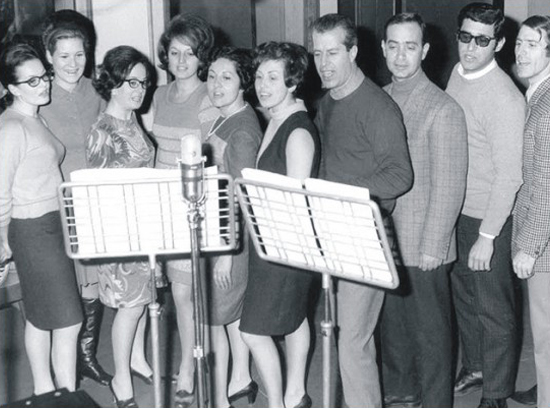 m the 1960s and 1970s. They also took the opportunity to reunite Alessandroni’s Cantori Moderni choir, who had not performed together since the early 1980s. Dell’Orso’s beautiful voice can be heard on the Theme of Rome track. The album also features vocals by Norah Jones and also Jack White who also provided the lyrics for his three songs. Even more recent, Dell’Orso was picked up by Alex Puddu, another true devotee of Italian vintage sound, to work on his 2013 album Registrazioni Al Buio, where she laid down 3 very smooth tracks (5*).
m the 1960s and 1970s. They also took the opportunity to reunite Alessandroni’s Cantori Moderni choir, who had not performed together since the early 1980s. Dell’Orso’s beautiful voice can be heard on the Theme of Rome track. The album also features vocals by Norah Jones and also Jack White who also provided the lyrics for his three songs. Even more recent, Dell’Orso was picked up by Alex Puddu, another true devotee of Italian vintage sound, to work on his 2013 album Registrazioni Al Buio, where she laid down 3 very smooth tracks (5*).
To try and cover all the composers, producers and productions Edda Dell’Orso worked with especially in the specific 60′ to 70’s period, would be a bit of a feat, and true fans will agree that I’m really only scratching the surface here. Her work is the epitome of intelligence and sophistication and she is the sound of Italian cinema, and remarkably she still continues to perform today with her strong distinctive voice. And obviously there’s a lot more we can talk about, regarding those great Italian composers that she worked with, that thankfully are now getting the praise they have always deserved. In time I’m hoping to cover a special selection of favourite cinematic Italian 7’S, but for now, stay tuned because there will be a follow up post tomorrow, celebrating another Italian female legend of the cinema soundtrack, Christy.
(1*) Edda Dell’Orso performing C’era una volta il West live in 1982.
(2*) Alessandroni was an accomplished whistler, and he can be heard quite famously on numerous Leone’s western soundtracks, and also was responsible for THAT twangy guitar riff that is central to the main theme for The Good, the Bad and the Ugly.
(3*) I Cantori Moderni, was an eight-to-sixteen person vocal group featuring Edda Dell’Orso, Giulia De Mutiis (Alessandroni’s first wife), Gianna Spagnuolo, Augusto Giardino, and Franco Cosacchi.
(4*) Mario Bava’s work from the “golden age” of Italian horror films is said to have kick-started the giallo film genre and the modern “slasher film”. He was also a special effects artist and had all director, screenwriter, and cinematographer credits for many movies including Danger: Diabolik, Planet of the Vampires, The Whip and the Body, Black Sabbath and Kill, Baby, Kill to name but a few.
(5*) Dell’Orso with Alex Puddu band captured live in Copenhaghen.
Research and referencing…



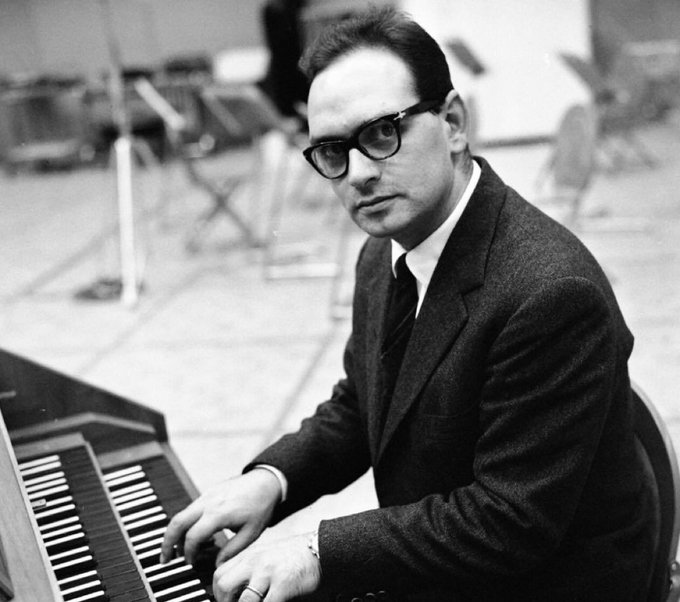
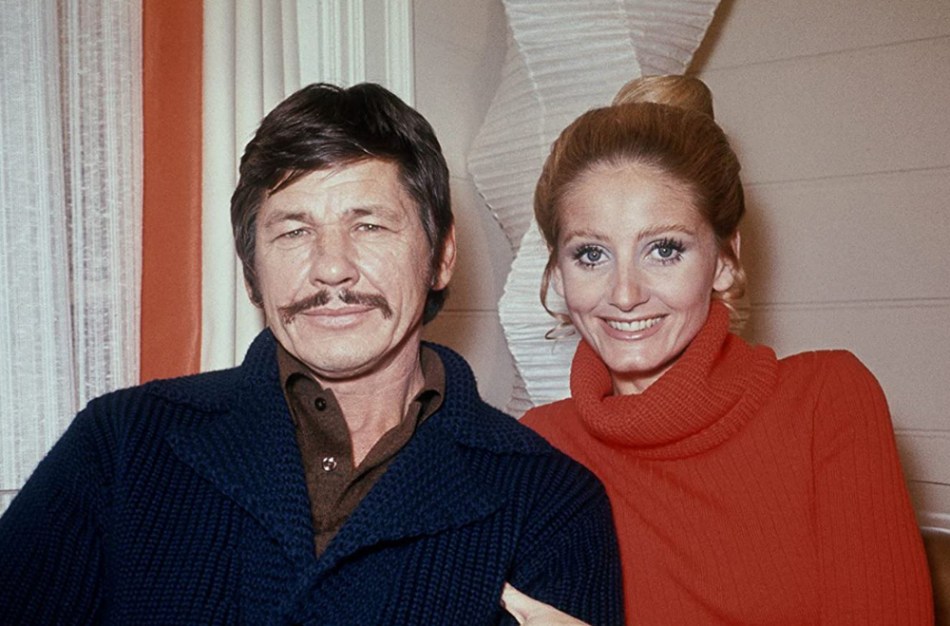
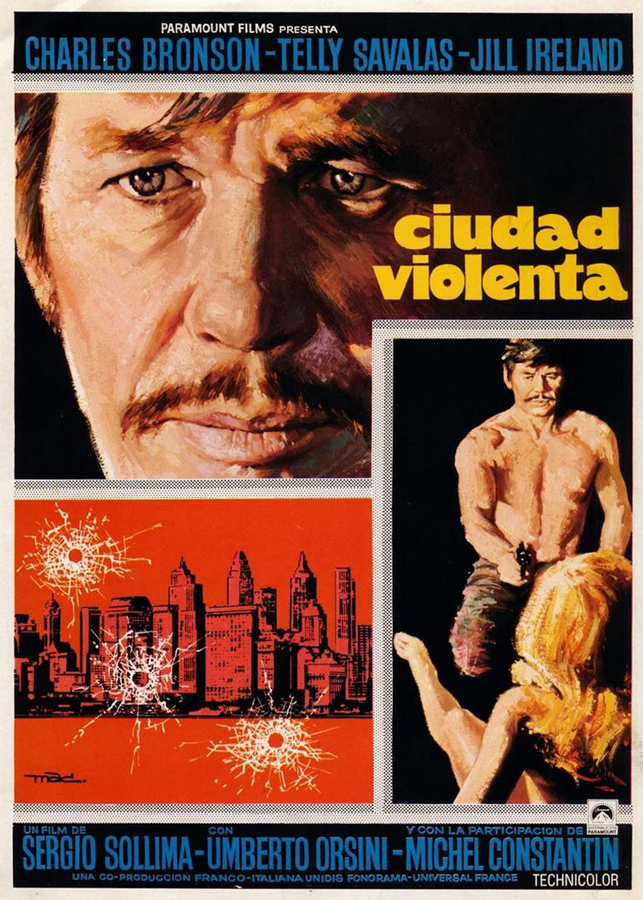


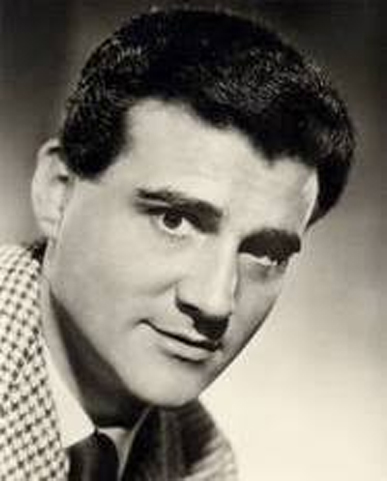


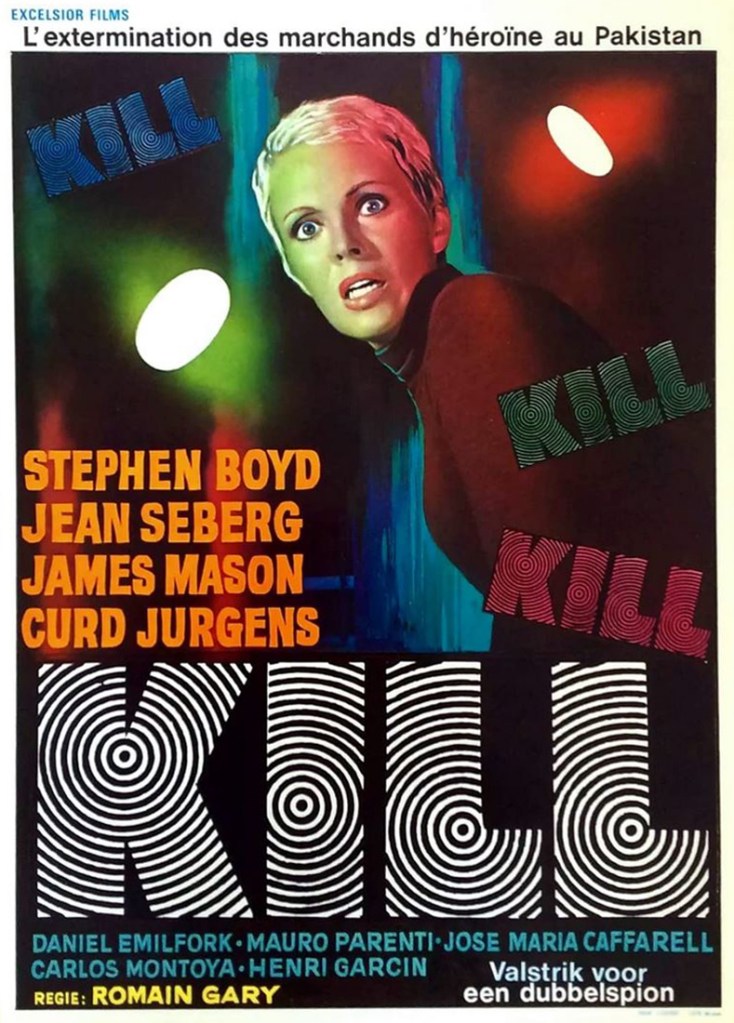


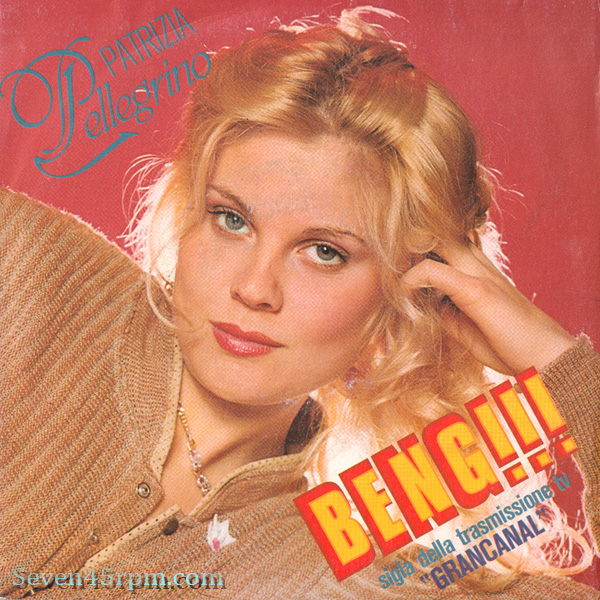



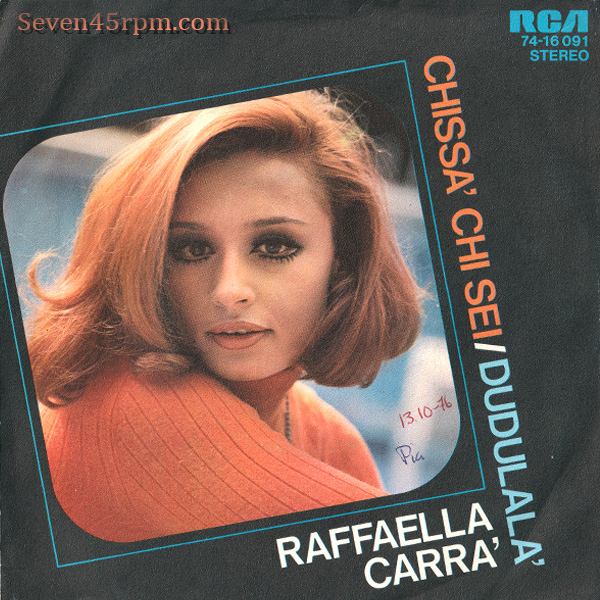
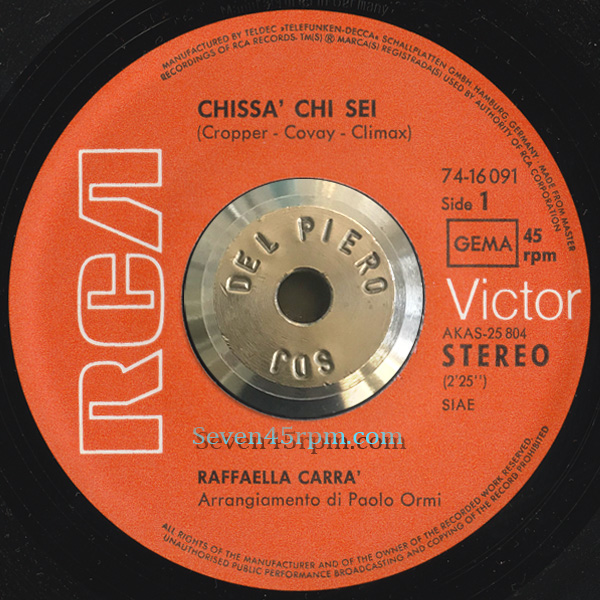












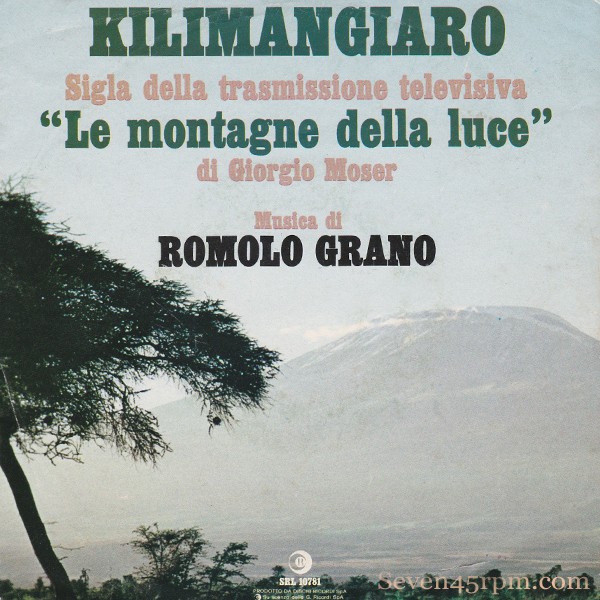
Recent Comments